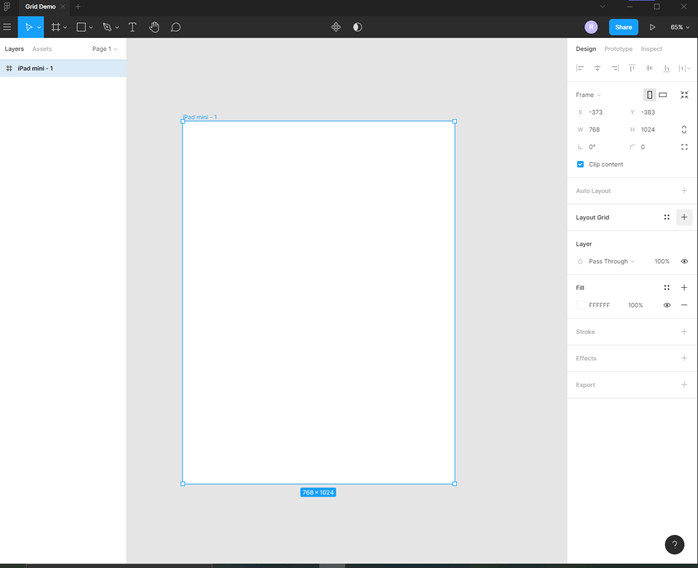
I won’t get into the interaction design weeds here, as this interactions and animations course is a thorough resource. Webflow may give you a better way to articulate how complex some things are to implement. I know from personal experience that we designers always want 102% percent accuracy in our designs, but sometimes there has to be a little give and take. If you’re not the designer, this won’t be as easy to do. In Figma, moving something is as simple as a drag and drop, and each element can live in its own little world, never impacting others.
Figma grid code#
No matter how familiar you are with making websites, things behave differently in code than they do in design tools. But if you’re a designer, this is your chance to see how what you thought would be any easy layout is actually more trouble than it’s worth. I know, I know - everyone’s all about pixel perfection. I’m almost always the designer and the developer, so I can make those decisions, but that might not be true for you.Įither way, here’s a word of advice: Don’t try to match your Figma file pixel for pixel. Then you can add a secondary class to change color (or other properties) for your specific use case.Īnother thing I find myself doing when going from Figma to Webflow, is making changes to the layout to make things easier to implement. This will allow your heading 1 class to deal with size, weight, and positioning, regardless of color. Be sure to keep your classes generically named, clean, and as minimal as possible.įor example, instead of naming something “Black Hero Text,” try creating a combo class of “All H1 Headings” + “Black Text” instead.
Figma grid how to#
I wrote a lot more about this in my series showing how to build an agency website, which might be helpful.

It’s super easy to start, but it can be challenging to keep things clean in larger sites. Styling your classes is both the easiest and most difficult part of Webflow.

I’m not going to go into best practices for grids here, but Webflow's landing page tutorial using grid will get you up to speed if you want to explore grid. You can also use the grid element (or set your div’s display property to grid) on your site, if you want to. I usually do this by adding a color-block div, and then changing its color over and over until all of my swatches are in Webflow. If you have one or two, this is a quick process, but if you have a lot, this can be tedious. Once the basic styles are defined, it’s a good time to add all your custom colors. If you’re using the Figma team styles, it’s helpful to keep things organized in a similar fashion. Just define everything on the page to match your Figma file. If you’re using the template I recommended, this should be a snap. A couple hundred kilobytes may seem like chump change, but it’s best to cut weight whenever possible to get that load time down.
Figma grid pro#
Pro tip: Fonts are large, so if you want to optimize the performance of your site, select as few weights as needed.

If it’s not a Google Font, upload the TTF or OTF file and to select the weights you want. The question was closed on UX.SE.Speaking of custom fonts, if the one you’re using isn’t in the default list, now’s a good time to jump into the project settings and, if it’s a Google Font, select it from the list. I have asked which SE site that was most suitable for this question, and SO was the suggested site. Is this is a known limitation in Figma? If yes, are there plugins that solve this problem, or is it outside Figma's scope to offer this type of alignment with CSS-based grid systems? Obviously, it would be very beneficial if the solution also supports breakpoints.

They implement in a CSS-based grid system similar to Bootstrap I would like to know if I have misunderstood Figma's built in capabilities, if there is a plug-in that solves the problem, if I have to create one Figma frame per CSS breakpoint (undesirable), or if there are other solutions.īackground: As an interaction/ UX designer, I would like to specify the responsiveness of a web based application, so that the front end developers know how the interface should appear at all browser widths. Summary: I have seemingly hit a limitation in Figma when trying to make the columns behave akin to a CSS grid system.


 0 kommentar(er)
0 kommentar(er)
